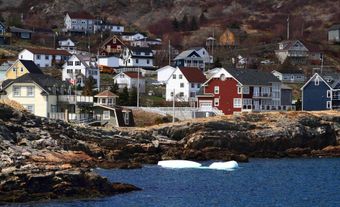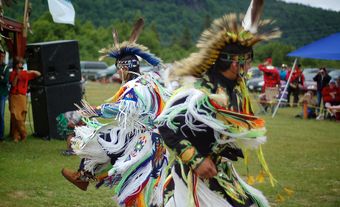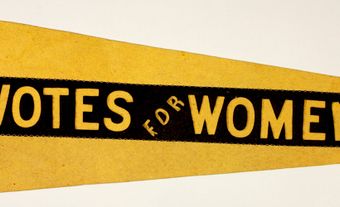The province of Newfoundland and Labrador has a minority Liberal government, elected on 16 May 2019. The premier of the province is Andrew Furey and the Lieutenant Governor is Judy May Foote. Its first premier, Joey Smallwood, was elected in 1949, after the province joined Confederation. Prior to Confederation, Newfoundland was first a British colony, then beginning in 1907, a dominion of the British Empire. It has been governed in various ways throughout its history, beginning with naval law in the 1600s.

Provincial Government Structure
There are 40 seats in Newfoundland and Labrador’s provincial government. Each seat is held by a Member of the House of Assembly (MHA). MHAs are elected by eligible voters in their electoral district. Provincial elections are usually held every four years on the second Tuesday of October. However, an election may be called before this date. This sometimes happens when the party in power thinks it may help them win re-election. Elections may also occur before four years have passed in cases where the government no longer has the confidence of the House of Assembly (see Minority Government).
As with the other provinces and territories in Canada, Newfoundland and Labrador uses a first-past-the-post electoral system, meaning the candidate with the most votes in each electoral district wins. Typically, the party with the most seats forms the government, and the leader of this party becomes premier. However, a party with fewer seats may also form a coalition with members of another party or parties in order to form the government.
Technically, as the Queen’s representative, the lieutenant-governor holds the highest provincial office, though in reality this role is largely symbolic. (See also Newfoundland and Labrador Premiers: Table; Newfoundland and Labrador Lieutenant-Governors: Table.)
The premier typically appoints members of the Cabinet from among the MHAs who belong to the party in power. Cabinet members are referred to as ministers and oversee specific portfolios. Typical portfolios include finance, health and education.
History
Naval Law
Before becoming a self-governing dominion of the British Empire in 1914, Newfoundland was a British colony. However, for much of the 17th and 18th centuries, Britain viewed Newfoundland as more of a seasonal fishing outpost than a colony. Any laws and regulations established during this time were meant to support the fishing industry. The King William’s Act of 1699 established naval law. Under naval law, fishing admirals were responsible for administering justice (fishing admirals were the captains of the first ships to arrive at a port at the beginning of each fishing season). If someone wanted to appeal a decision made by a fishing admiral, they could take their complaint to the commander of one of the naval warships stationed on the coast of the island.Over time, the authority of the fishing admirals weakened. In 1729, Britain began appointing a naval governor to oversee the island. From 1729 until 1832, government in Newfoundland consisted of the governor and his administrative assistants, who were each responsible for a section of the island.
Representative (1832) and Responsible Government (1855)
Newfoundland was granted representative government in 1832. With representative government, members of a House of Assembly were elected by some residents of the island (namely property-owning men over the age of 21). However the governor, his executive council and a legislative council were still appointed by Britain.In addition, the legislative council had the power to reject bills proposed by the House of Assembly. Members of the legislative and executive councils were generally wealthy, conservative and Anglican, while members of the house tended to be liberal and either Irish Catholic or Methodist. These ethnic and class divisions led to tension between the house and the councils, and often meant important government legislation did not get passed.
In 1855, representative government was replaced by responsible government. Responsible government meant that the governor now appointed elected members of the House of Assembly to serve as premier and on the executive council. The legislative council — the equivalent of an Upper House or Senate — remained an unelected government body.
Dominion of Newfoundland
In 1907, Newfoundland became a dominion of the British Empire, rather than a colony. This change of status recognized that Newfoundland was largely a self-governing nation within the British Empire. Theoretically, becoming a dominion gave Newfoundland the same status as other countries within the commonwealth, namely Canada, Australia and New Zealand.
Did you know?
In 1925, women received the right to vote in Newfoundland elections. However, while all men age 21 and over could vote, women had to be at least 25. When Newfoundland joined Confederation in 1949, the voting age became 21 for everyone. Today the voting age in Newfoundland and Labrador, as in other provinces and territories, is 18.
Commission of Government: 1934 – 49
At the beginning of the Great Depression,Newfoundland faced bankruptcy, in part due to its contribution to the First World War. The government’s inability to pay its debt, combined with a several instances of corrupt politicians, eroded Newfoundlanders’ faith in their government. Representatives from Newfoundland, Canada and Britain studied the problem and decided to dissolve Newfoundland’s responsible government. From 1934 to 1949, Newfoundland was governed by acommission of governmentconsisting of a British governor, three British commissioners and three Newfoundlanders, all appointed by the British government. No government elections were held for the next 15 years.
Joey Smallwood: 1949–72
Joseph (Joey) Smallwood, a journalist, radio broadcaster and businessman, led Newfoundland’s campaign to joinConfederation. Those in favour of Newfoundland joining Canada believed the union would improve the island’s economy, especially since Britain’s interest in Newfoundland was declining. Those against Confederation were primarily Irish Catholic, many of whom believed that problems in their home country could be traced to Ireland’s similar union with England.
In two general referenda, Newfoundlanders voted in favour of Confederation, and both the island and mainland Labrador joined Canada in 1949. A lieutenant-governor was appointed and Smallwood was asked to form an interim government. In the new province’s first general election, Smallwood’s Liberals took 22 seats, the Conservatives five and an Independent one. (See alsoNewfoundland and Confederation; Confederation’s Opponents.)
Smallwood’s Liberals continued to dominate Newfoundland’s politics throughout the 1950s and 1960s. However, by the early 1970s the party was weakened by conflicts between the premier and some powerful Cabinet ministers. In 1972 the Liberals lost the general election to the Progressive Conservatives.
Moores, Peckford and Rideout: 1972–89
The Progressive Conservative Party won the 1972 election under the leadership ofFrank Moores, who served as premier until 1979. That year, the leadership passed to Brian Peckford, the former minister of mines and energy in Moores’s administration.

In 1982, Peckford led his party to a landslide victory, winning 44 of the legislature’s 52 seats. The remaining eight seats were held by Liberals. In 1985, Peckford won a reduced majority, obtaining 36 seats to the Liberals’ 15, and the first NDP representative was elected in Newfoundland history.
Prior to Peckford’s election, the relationship between Newfoundland and the federal government was strained. The two governments argued over the ownership of offshore resources, the sale of hydro power in Labrador and the restructuring of the North Atlantic fishing industry. However, after Brian Mulroney was elected prime minister in 1984 the relationship improved. Whereas many provinces were uncertain about free trade with the United States, Peckford strongly supported theMulroney government’s initiatives in that direction. Peckford was also a key supporter of the Mulroney government’s Meech Lake Accord. Tom Rideout succeeded Peckford as premier in 1989, but lost later that year to the Liberals under the leadership ofClyde Wells.
Wells, Tobin, Tulk and Grimes: 1989–2003

In contrast to his predecessors, Clyde Wells was adamantly opposed to the Meech Lake Accord and cancelled Newfoundland’s ratification of the deal. Despite his opposition to Meech Lake, Wells was willing to support the Charlottetown Accord, which was prime minister Brian Mulroney’s second attempt at constitutional reform. In 1992, Canadians said no to the Charlottetown Accord in a nation-wide referendum. Newfoundland, however, was one of the few provinces to vote in favour.
In the 1993 general election, Wells was elected premier for a second time. He campaigned on a promise to bring the province’s finances under control. While Wells had some success repaying the province’s debt and overcoming its deficit, the destruction of the Atlantic fishery increased the province’s financial difficulty. Wells’s successor, former Liberal federal cabinet ministerBrian Tobin, was elected in 1996. Tobin believed that money from the Hibernia oil field off the coast of Newfoundland and the Voisey’s Bay mine in Labrador would have to play a major role in improving the provincial economy.
In 2000, Tobin resigned, returning to federal politics. Beaton Tulk briefly served as interim premier untilRoger Grimeswon the Liberal leadership convention in 2001. Grimes held office for a short term, from 2001 to 2003.
Did you know?
Following the Royal Proclamation of 1763, the governor of Newfoundland controlled the coast of Labrador and the Hudson’s Bay Company the interior. This boundary, however, was never clearly defined, and Quebec and Newfoundland governments argued over its definition for over 160 years. Finally, in 1927 a judicial committee decided on a border between Quebec and Labrador, and Labrador as it’s known today came under the jurisdiction of Newfoundland. Despite this, it took until 2001 for the province to change its name to Newfoundland and Labrador.
Williams and Dunderdale: 2003–2014

From 2003 to 2010, Progressive Conservative leaderDanny Williamsserved as premier. Known for his scrappy nature, Williams became known for his efforts to secure the province more control and revenues from offshore oil fields. Despite high-profile arguments with the federal government on the topic, Williams was ultimately successful in securing an oil income for Newfoundland and Labrador. In 2008, he announced the province would stop receiving equalization payments for the first time in its history.

Following Williams’s resignation, Progressive Conservative memberKathy Dunderdalewas sworn in as Newfoundland and Labrador’s 10th premier on 3 December 2010. Dunderdale was the province’s first female premier. In 2011, she won the regularly scheduled general election with a majority government. However, Dunderdale struggled in the shadow of the popular former premier Danny Williams. She resigned in 2014 amid accusations of mishandling a wave of power outages across the province. Finance Minister Tom Marshall stepped up to serve as interim premier.
Davis, Ball and Furey: 2014 – Present
Following Tom Marshall’s retirement, Paul Davis was sworn in as the province’s 12th premier on 26 September 2014. Davis — a former provincial cabinet minister — was elected head of the provincial Progressive Conservatives at a leadership convention held earlier that month.

Based on the province’s fixed election date, Davis was forced to call a general election after just over a year in office. In advance of the vote, the number of seats in the House of Assembly was reduced from 48 to 40 — a PC initiative aimed at cutting costs. The election came at a time when the Progressive Conservatives were struggling in the polls. Commentators dated the decline in support for the party to 2010 and the departure of Danny Williams. In 2015, the Liberals, under the leadership of Dwight Ball, secured a landslide victory, winning 31 of the province’s 40 seats. The PCs were reduced to seven seats, while the NDP won the remaining two.
In the 2019 general election, Ball and his party narrowly hung on to power. For the first time since 1971, voters elected a minority government, giving the Liberals 20 seats, the PCs 15, and the NDP three. The remaining two seats in the House of Assembly went to Independents. Many believe that the PCs, led by Ches Crosibe, lost the election in part due to public frustration over the Muskrat Falls hydroelectric project. The project, which includes the construction of a dam and generating station at Muskrat Falls, Labrador, is two years behind schedule and rapidly rising in cost. While it was one of Crosbie’s predecessors, Kathy Dunderdale, who approved the project, the Progressive Conservative party as a whole has carried much of the blame.
In February 2020, Ball announced his resignation. It came amid a series of scandals, including preferential treatment given to a former Liberal staffer and a former deputy minister in their work outside government. The Liberal leadership race that followed Ball’s resignation was delayed due to the COVID-19 pandemic (see Pandemics in Canada). Andrew Furey, an orthopaedic trauma surgeon, eventually won that race. On 19 August 2020, he was sworn in as Newfoundland and Labrador’s 14th premier.

 Share on Facebook
Share on Facebook Share on X
Share on X Share by Email
Share by Email Share on Google Classroom
Share on Google Classroom


